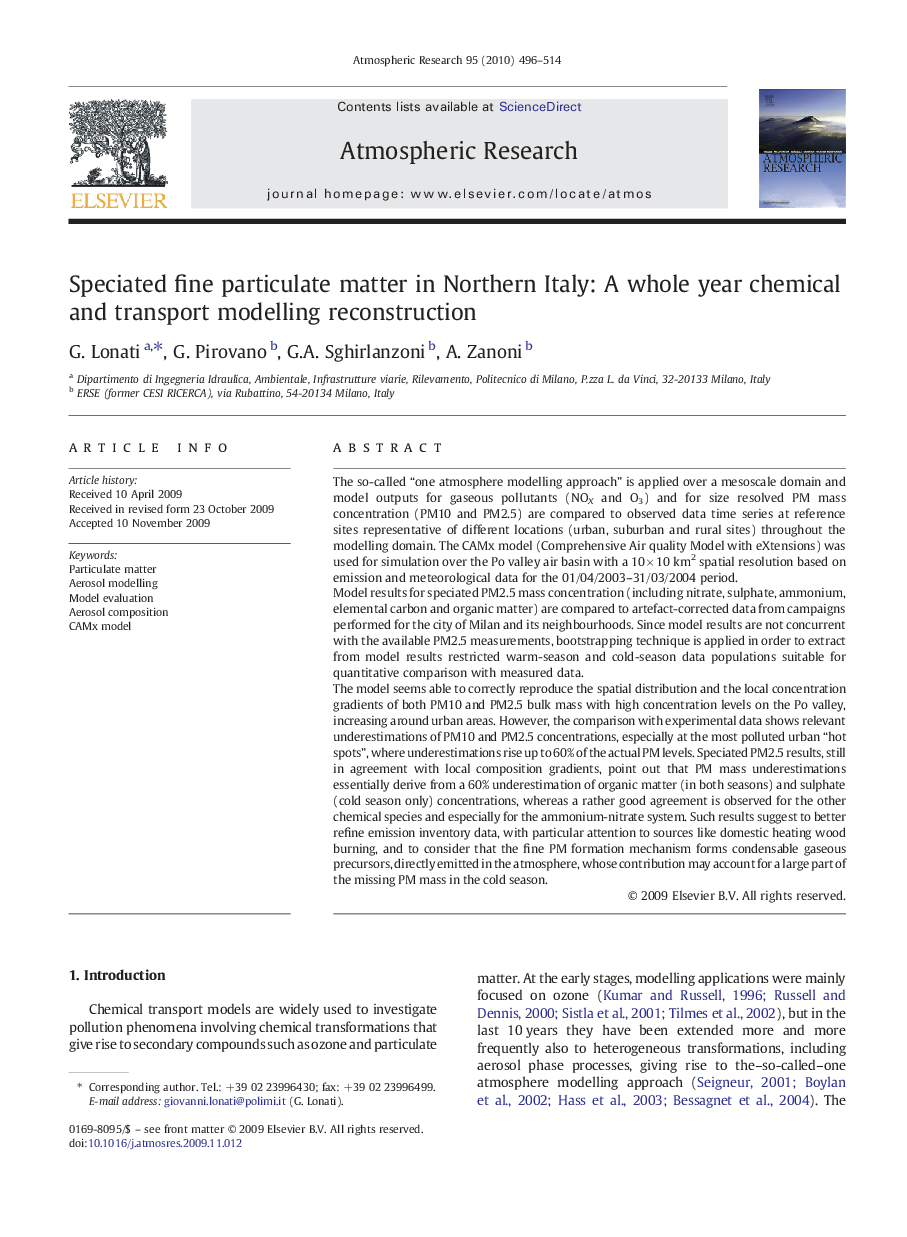| Article ID | Journal | Published Year | Pages | File Type |
|---|---|---|---|---|
| 4450640 | Atmospheric Research | 2010 | 19 Pages |
The so-called “one atmosphere modelling approach” is applied over a mesoscale domain and model outputs for gaseous pollutants (NOX and O3) and for size resolved PM mass concentration (PM10 and PM2.5) are compared to observed data time series at reference sites representative of different locations (urban, suburban and rural sites) throughout the modelling domain. The CAMx model (Comprehensive Air quality Model with eXtensions) was used for simulation over the Po valley air basin with a 10 × 10 km2 spatial resolution based on emission and meteorological data for the 01/04/2003–31/03/2004 period.Model results for speciated PM2.5 mass concentration (including nitrate, sulphate, ammonium, elemental carbon and organic matter) are compared to artefact-corrected data from campaigns performed for the city of Milan and its neighbourhoods. Since model results are not concurrent with the available PM2.5 measurements, bootstrapping technique is applied in order to extract from model results restricted warm-season and cold-season data populations suitable for quantitative comparison with measured data.The model seems able to correctly reproduce the spatial distribution and the local concentration gradients of both PM10 and PM2.5 bulk mass with high concentration levels on the Po valley, increasing around urban areas. However, the comparison with experimental data shows relevant underestimations of PM10 and PM2.5 concentrations, especially at the most polluted urban “hot spots”, where underestimations rise up to 60% of the actual PM levels. Speciated PM2.5 results, still in agreement with local composition gradients, point out that PM mass underestimations essentially derive from a 60% underestimation of organic matter (in both seasons) and sulphate (cold season only) concentrations, whereas a rather good agreement is observed for the other chemical species and especially for the ammonium-nitrate system. Such results suggest to better refine emission inventory data, with particular attention to sources like domestic heating wood burning, and to consider that the fine PM formation mechanism forms condensable gaseous precursors, directly emitted in the atmosphere, whose contribution may account for a large part of the missing PM mass in the cold season.
